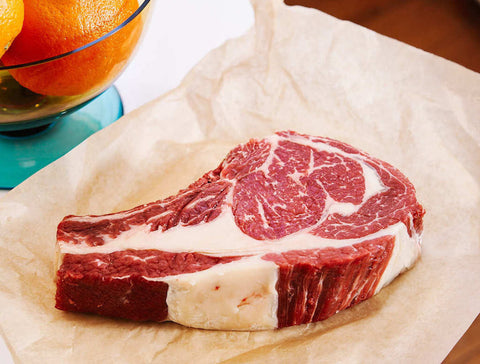Ham - a Christmas staple and sometimes…a little confusing. You’ll hear descriptions like ‘naturally cured ham’, ‘nitrate-free ham’ and ‘traditionally cured ham’ which can muddle you up a little – isn’t ham, ham?
Yes and no. The descriptions above refer to the process the hams have undergone to turn from pork meat into ham through the process of ‘curing’.
Here’s the basic rundown for what a ham is and how we make our hams at Hagen’s Organics – on a small scale, by hand – to explain how curing works.
Ham is made by brining (soaking salty water) the leg of a pig to cure it. Curing is the oldest form of preservation of meat and fish and is done using salts and additives to preserve the flavour, texture and colour so it can be safely eaten in the future. It can be helpful to think of the cure as a type of marinade – that you rub all over the meat to impart flavour, colour and begin the cooking process.
We use two different types of cures to make two types of ham, our Natural Cure and our Traditional Cure. The process for making these types of ham are the same – butcher, cure then smoke - but the cures are a little different.
TRADITIONAL CURE HAMS
The Traditional Cure contains commercial nitrates that combined with the salt aid in the curing process. These nitrates add to the flavour many people have come to love about ham as well as give it a blushed pink colour. We’ve worked hard to create a recipe for our hams that uses the minimum amount of salt required – this is better for our us, and also allows the flavour of the pork to shine through.
NATURAL CURE HAM
What are natural nitrates?
Our Natural Cured hams are made with nitrates derived from celery. Plants like spinach and celery have naturally occurring nitrates in them – so this is extracted and added to our hams to help preserve them with the salt.
Some people have asked if natural nitrates are bad? In most people’s diets, natural nitrates come overwhelmingly from vegetables – so they’re already present in the veggies we’re eating.
You’ll find that hams with natural nitrates have a more muted colour – not quite as rosey pink, a little more grey. Don’t be deterred by the colour, this is how it should be. Natural nitrates don’t impart colour in the same way synthetic nitrates do.
Be wary of very pink ham – this is likely pumped full of synthetic nitrates and added colours.
The cured ham is then smoked at a low temperature which imparts a smoky flavour into the meat. We use sustainably grown Redgum woodchips which are great for imparting flavour and don’t blow ash like other woods do.
Once smoked, the ham can be eaten!
Hagen’s Naturally Cured hams have a fridge life of 3-4 weeks when cared for and our Traditional Hams have about 5-6 weeks.
Summary:
Traditional cure ham – made using commercial nitrates to give pink colour and much-loved flavour to the ham. This is often a fast and safe way to prepare hams
Natural cure ham – made using vegetable-based nitrates that give paler colour and only contains preservatives found in nature. This is sometimes referred to as nitrate-free, though does contain naturally occurring nitrates but does not contain synthetic nitrates. When done well, produces hams that are delicious and safe to eat.
Nitrate free – products without natural or synthetic cures. Typically made only using salt to preserve. Takes longer to mature (over weeks) and can increase the risk of fault in the product.







